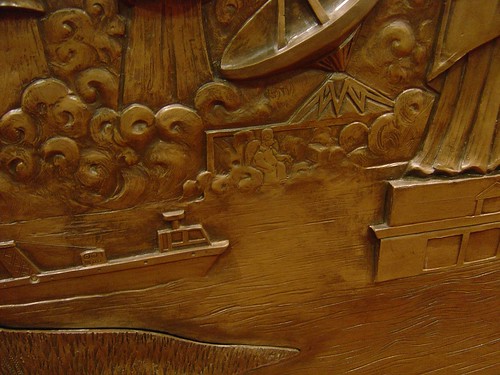Little children, I am with you only a little longer. You will look for me; and as I said to the Jews so now I say to you, “Where I am going, you cannot come.” I give you a new commandment, that you love one another. Just as I have loved you, you also should love one another. By this everyone will know that you are my disciples, if you have love for one another.’
JOHN 13: 33-35
Holy week again and--much like our Gospel ancestors--we find ourselves gathering at the table in fear.
In the past week, a European city has been struck by terrorist violence, triggering the usual wave of "Will it happen here?" Our "leaders" have sprung into "action" with South Carolina's Senate passed a bill to create a "refugee registry" the contents of which will, of course, only be available to our trusty law enforcement friends, because that won't cause any problems. Just like it didn't in 1930s Germany. One of the (God help us) presidential candidates stated that under his watch, we would "patrol Muslim neighborhoods" to stamp out any hint of suspicious activity.
But one bogeyman isn't enough, you know, so two adjoining states in the same part of the country (and one elsewhere lest we think there's something in the water), no doubt still smarting from the Supreme Court telling them "Yes you WILL let same-gender couples marry" are cobbling together what restrictions they can still impose on LGBT folk to make sure they still feel oppressed. Georgia's governor is considering a "religious liberty" bill that allows one to discriminate based on one's so-called beliefs, and North Carolina up-ended non-discrimination bills in several cities by passing its own that specifically excludes orientation and gender identity, and also forbids lower jurisdictions from enacting broader protections. It ordered government buildings to assign a single gender to bathrooms and ensure the anatomy of those using them matches the sign. In the latter case, they clearly did exhaustive study first, since the entire thing went down--from proposal to signature by the governor--in under twelve hours.
Kansas went even further, encouraging vigilantism by offering a $2,500 reward to anyone who "catches" someone whose "plumbing doesn't match" using the "wrong" bathroom. Really? How is that not creepy and invasive? Who is going to check, and on what grounds? The sad irony is that this law, which states its purpose is to prevent violent, traumatic encounters, will pretty much require the same in order to be enforced.
Fear is at the root of all of this; fear we attempt to assuage with reactive window-dressing. The truth none of us wants to face about violence is that it is--by definition--random. While vigilance and keen observation of our surroundings are doubtless important, the idea that we will plug all the holes is delusional. And following people around based on religion or identity will neither prevent violence nor do anything to de-escalate the tension that leads to it. The vast majority of Muslim people in the world are horrified by the acts perpetrated by DAISH and other extremist groups, just (I hope) as most Christians would be horrified by the violence the church has perpetrated on Muslims and others throughout its history, and is perpetrating now on LGBT people in Russia, Africa, and the good old US of A.
Which brings it back to us, here in a crazy and uncertain world, where seemingly endless bad news and a 24-hour ticker of threats seems bent on making us a bunch of suspicious insomniacs peeking under bathroom stalls. The goal of "religious freedom" as described by people who would likely also describe our country (right or wrong) as a "Christian nation" should, one would assume, free us to act as our savior would. The same savior, who--knowing one of those he called his friends would imminently perpetrate violence upon him--nonetheless greeted each of them with a kiss, and sat with them to eat and drink.







